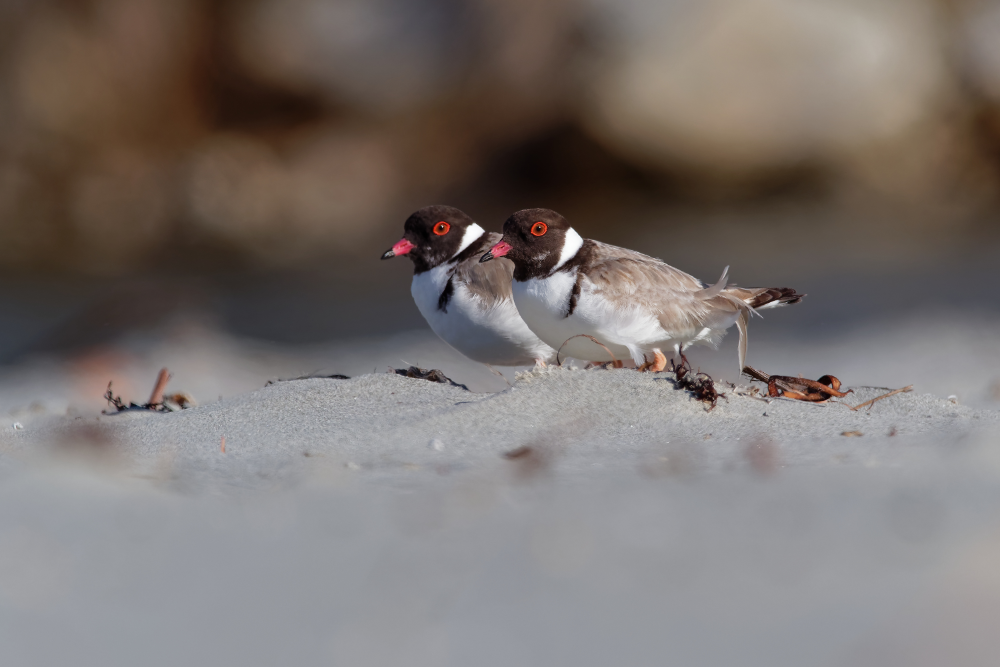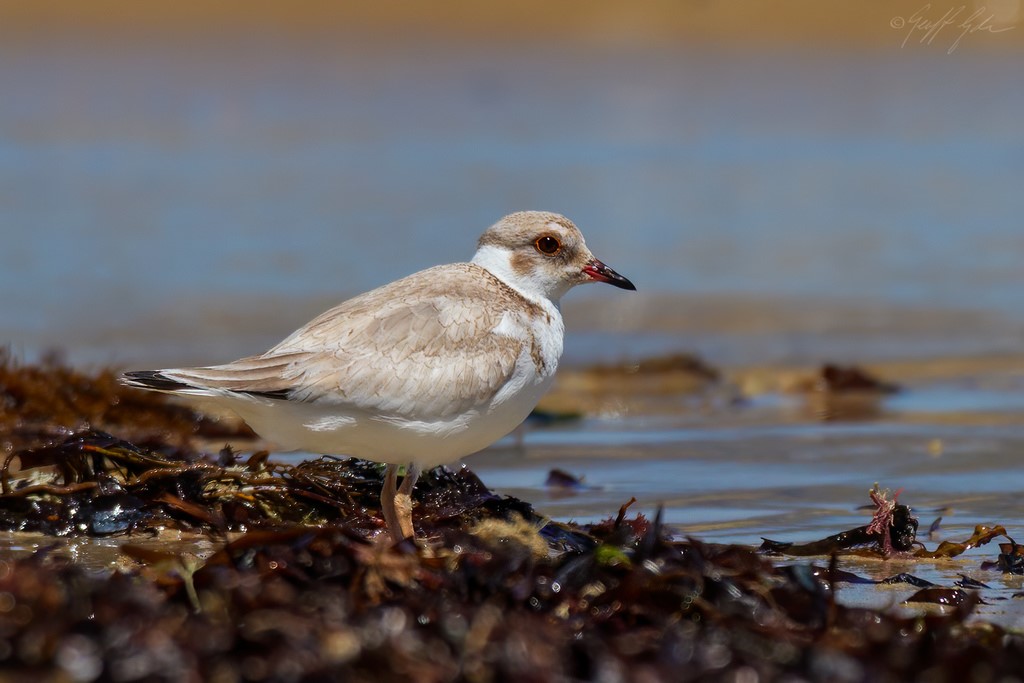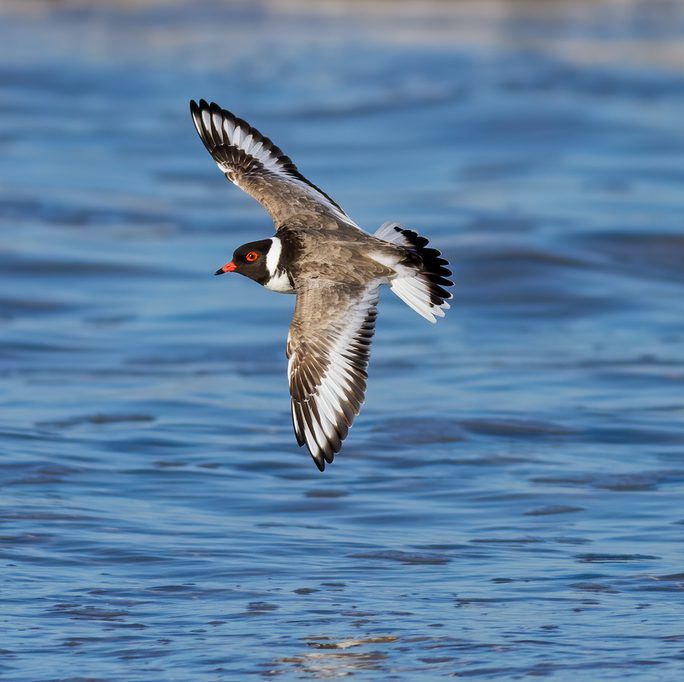
Hooded Plover
Species Name: Thinornis rubricollis
Common Name: Hooded Plover
Wadawurrung name:
Conservation status: Vulnerable in Victoria
Details: The Hooded Plover is a small, plump wader that can be easily identified by the dark head, white nape and black hindneck collar. The upper body is brown-grey with white underparts. The underparts are white and the legs are pink. Juvenile birds have light brown head markings. They are found around ocean sandy beaches and lakes. Their nests are shallow scrapes in the sand on the upper beach or in adjacent sand dunes.
Habitat: Beach (link to habitat type)
Breeding: The number of Hooded Plovers has declined over the past 50 years as increased human activities take place on the sandy beaches where they feed and nest. Breeding season is from August to January. The eggs are laid in a small scrape in the sand above high tide mark. The adult birds are easily disturbed from their nests by people or dogs and the unguarded eggs may be taken by gulls or ravens. The tiny chicks scurry along the beach with the adults, and their only defence is to lay still when danger approaches. This makes them vulnerable to being crushed by people, horses or vehicles. They are also easy prey for foxes, rats and cats. Picks tiny invertebrates from the sand and seaweed near the water’s edge.


